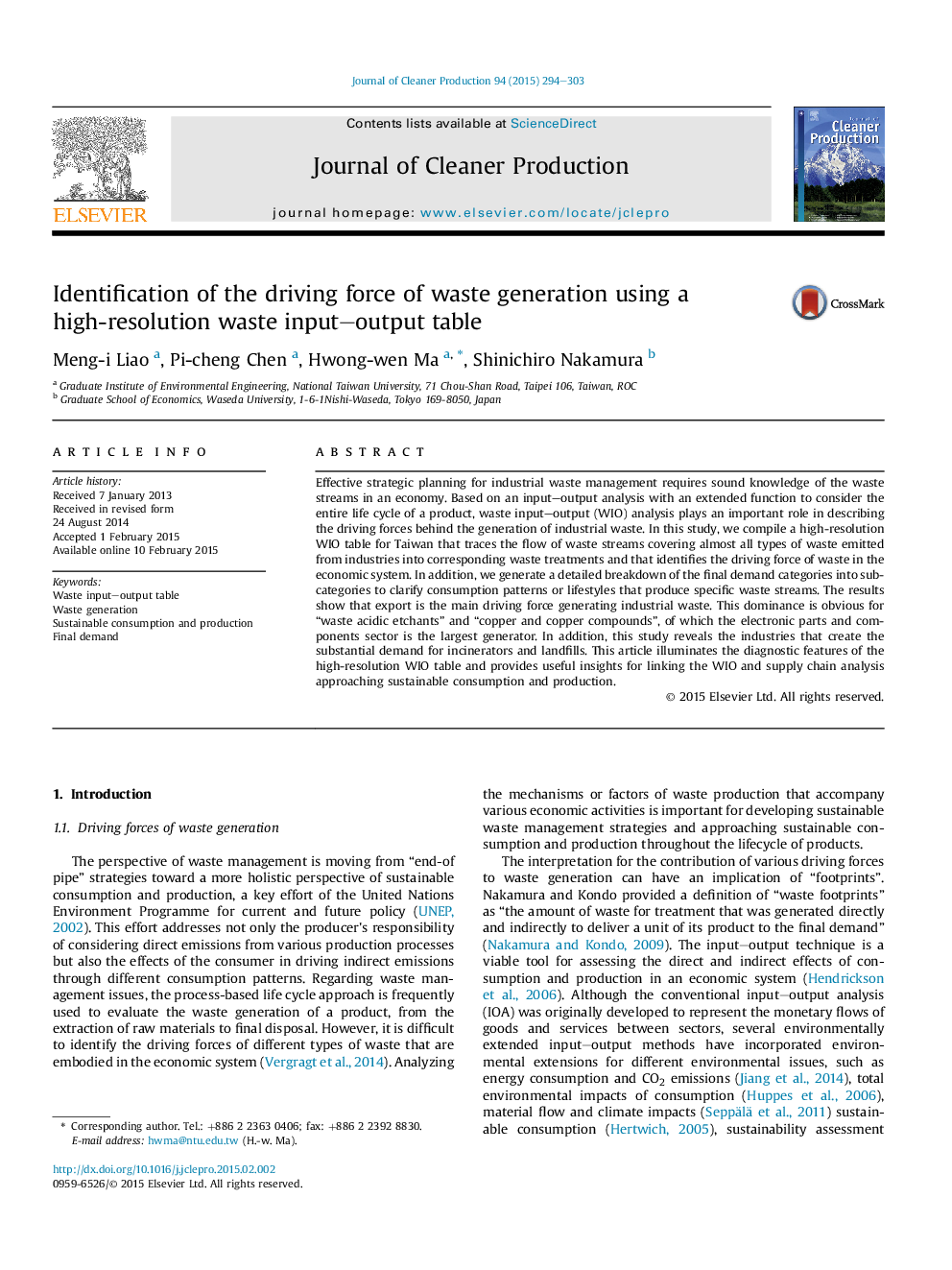| Article ID | Journal | Published Year | Pages | File Type |
|---|---|---|---|---|
| 8104677 | Journal of Cleaner Production | 2015 | 10 Pages |
Abstract
Effective strategic planning for industrial waste management requires sound knowledge of the waste streams in an economy. Based on an input-output analysis with an extended function to consider the entire life cycle of a product, waste input-output (WIO) analysis plays an important role in describing the driving forces behind the generation of industrial waste. In this study, we compile a high-resolution WIO table for Taiwan that traces the flow of waste streams covering almost all types of waste emitted from industries into corresponding waste treatments and that identifies the driving force of waste in the economic system. In addition, we generate a detailed breakdown of the final demand categories into sub-categories to clarify consumption patterns or lifestyles that produce specific waste streams. The results show that export is the main driving force generating industrial waste. This dominance is obvious for “waste acidic etchants” and “copper and copper compounds”, of which the electronic parts and components sector is the largest generator. In addition, this study reveals the industries that create the substantial demand for incinerators and landfills. This article illuminates the diagnostic features of the high-resolution WIO table and provides useful insights for linking the WIO and supply chain analysis approaching sustainable consumption and production.
Related Topics
Physical Sciences and Engineering
Energy
Renewable Energy, Sustainability and the Environment
Authors
Meng-i Liao, Pi-cheng Chen, Hwong-wen Ma, Shinichiro Nakamura,
